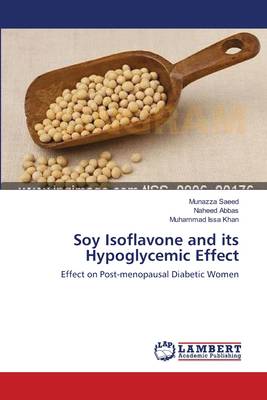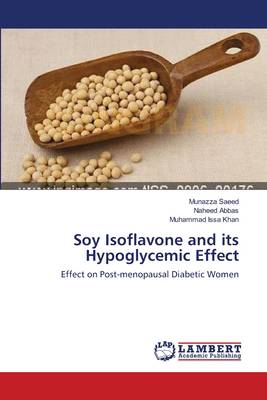
- Afhalen na 1 uur in een winkel met voorraad
- Gratis thuislevering in België vanaf € 30
- Ruim aanbod met 7 miljoen producten
- Afhalen na 1 uur in een winkel met voorraad
- Gratis thuislevering in België vanaf € 30
- Ruim aanbod met 7 miljoen producten
Zoeken
Soy Isoflavone and its Hypoglycemic Effect
Effect on Post-menopausal Diabetic Women
Munazza Saeed, Naheed Abbas, Muhammad Issa Khan
Paperback | Engels
€ 48,45
+ 96 punten
Omschrijving
Diabetes mellitus is an important endocrine disorder and is causing health problems in many countries. According to the available data overall 6.9 million people Pakistan are affected with diabetes, whereas WHO has ranked Pakistan as 7th on diabetes prevalence day. The International Diabetes Federation has given some predictions that by 2030 the 366 million people with diabetes will increase to 522 million. Dietary supplementation of soy isoflavone has been given promising results regarding altering glycemic level, and insulin resistance in post-menopausal diabetic women with type 2 diabetes. Soy isoflavone has a constructive and straight effect on controlling diabetes. Recent study explored the hypoglycemic effect of soy isoflavone in post-menopausal diabetic women. Fifteen diabetic post-menopausal women were fed on 60 mg/day soy isoflavone at fasting time. The pre-feeding blood glucose and two hours after feeding blood glucose levels of diabetic women were examined daily, while other bio-chemical assays like blood insulin, liver functioning test, total protein, albumin, globulin, urea and creatinine were determined weekly during the course of the study.
Specificaties
Betrokkenen
- Auteur(s):
- Uitgeverij:
Inhoud
- Aantal bladzijden:
- 104
- Taal:
- Engels
Eigenschappen
- Productcode (EAN):
- 9783659118821
- Verschijningsdatum:
- 14/05/2012
- Uitvoering:
- Paperback
- Formaat:
- Trade paperback (VS)
- Afmetingen:
- 152 mm x 229 mm
- Gewicht:
- 163 g

Alleen bij Standaard Boekhandel
+ 96 punten op je klantenkaart van Standaard Boekhandel
Beoordelingen
We publiceren alleen reviews die voldoen aan de voorwaarden voor reviews. Bekijk onze voorwaarden voor reviews.











